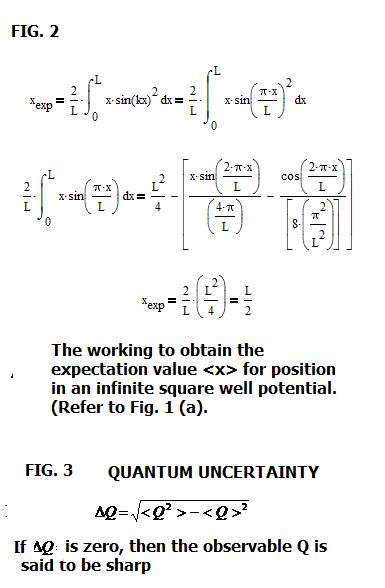

Point out that this equation links a particle property (energy) with a wave property (frequency).Īsk your students to calculate the energy and frequency or a photon for one or two other transitions. (Use two levels from the diagram for the hydrogen atom.) Worked example and student questions: Calculating frequenciesĬalculate the frequency and wavelength of the quantum of radiation (photon) emitted due to a transition between two energy levels. The atom must absorb energy to raise the electron to the surface of the atom and allow it to escape.
#Quantum physics calculator free#
The students may well ask the question, Why do the states have negative energy? This is because the zero of energy is considered to be that of a free electron just outside the atom. It is most important that this diagram is to scale to emphasise the large energy drops between certain levels. Discussion: Energy levels in a hydrogen atom When the electrons fall back to a lower level they emit a quantum of radiation. Alternatively the electrons can change energy level as a result of heating (which, in turn, can either be by absorbing radiation or particle collision). The absorption of a photon can raise an electron to a higher energy level. Resourceful Physics >Teachers>OHT>Emission of Light The different levels on which they end up – the floor, on a desk, on a shelf – gives a very simple idea of energy levels.Įpisode 501-1: The emission of light from an atom (Word, 35 KB) Throw a handful of polystyrene balls round the lab and see where they settle. The books represent the electrons, added to the lowest shelf first etc Demonstration: Illustrating quantisation

Different arrangement of the shelves represents different energy level structures for different atoms. The bookshelves are quantised – only certain positions are allowed. Think about a bookcase with adjustable shelves. The ground state is the condition of lowest energy – most electrons are in this state. An electron can only move directly between such levels, emitting or absorbing individual photons as it does so. The electron’s energy levels are discrete. This must be replaced by the Bohr atomic structure – orbits are quantised. Explain that, in the classical model, an orbiting electron would emit radiation and spiral in towards the nucleus, resulting in the catastrophic collapse of the atom. Students will already have a picture of the atom with negatively charged electrons in orbit round a central positively charged nucleus. Relate the appearance of the spectra to the energy levels within the atoms of the gas. Astronomers examine the light of distant stars and galaxies to discover their composition (and a lot else). You could relate this to the simple flame tests that students will have used at pre-16 level. The spectrum of a gas gives a kind of finger print of an atom. What is the difference? (The white light shows a continuous spectrum the gas discharge lamps show line spectra.) They can do this using a direct vision spectroscope or a bench spectroscope, or simply by holding a diffraction grating up to their eye. Allow students to look at the spectrum of each gas. Show a white light and a set of standard discharge lamps: sodium, neon, hydrogen and helium. Student experiment: Relating photon energy to frequency (30 minutes)ĭemonstration: Looking at emission spectra.Student calculations: Photon flux (20 minutes).Worked example: Photon flux (10 minutes).Discussion: Distinguishing quantisation and continuity (5 minutes).Worked example and Student Questions: Calculating frequencies (20 minutes).Discussion: Energy levels in a hydrogen atom (10 minutes).Demonstration: Illustrating quantisation (10 minutes).Discussion: The meaning of quantisation (20 minutes).Demonstration: Looking at emission spectra (20 minutes).This episode discusses: quantisation energy levels in a hydrogen atom and, distinguishing quantisation and continuity. And is accompanied by worked examples, student question sets, a student experiment and a demonstration.


 0 kommentar(er)
0 kommentar(er)
